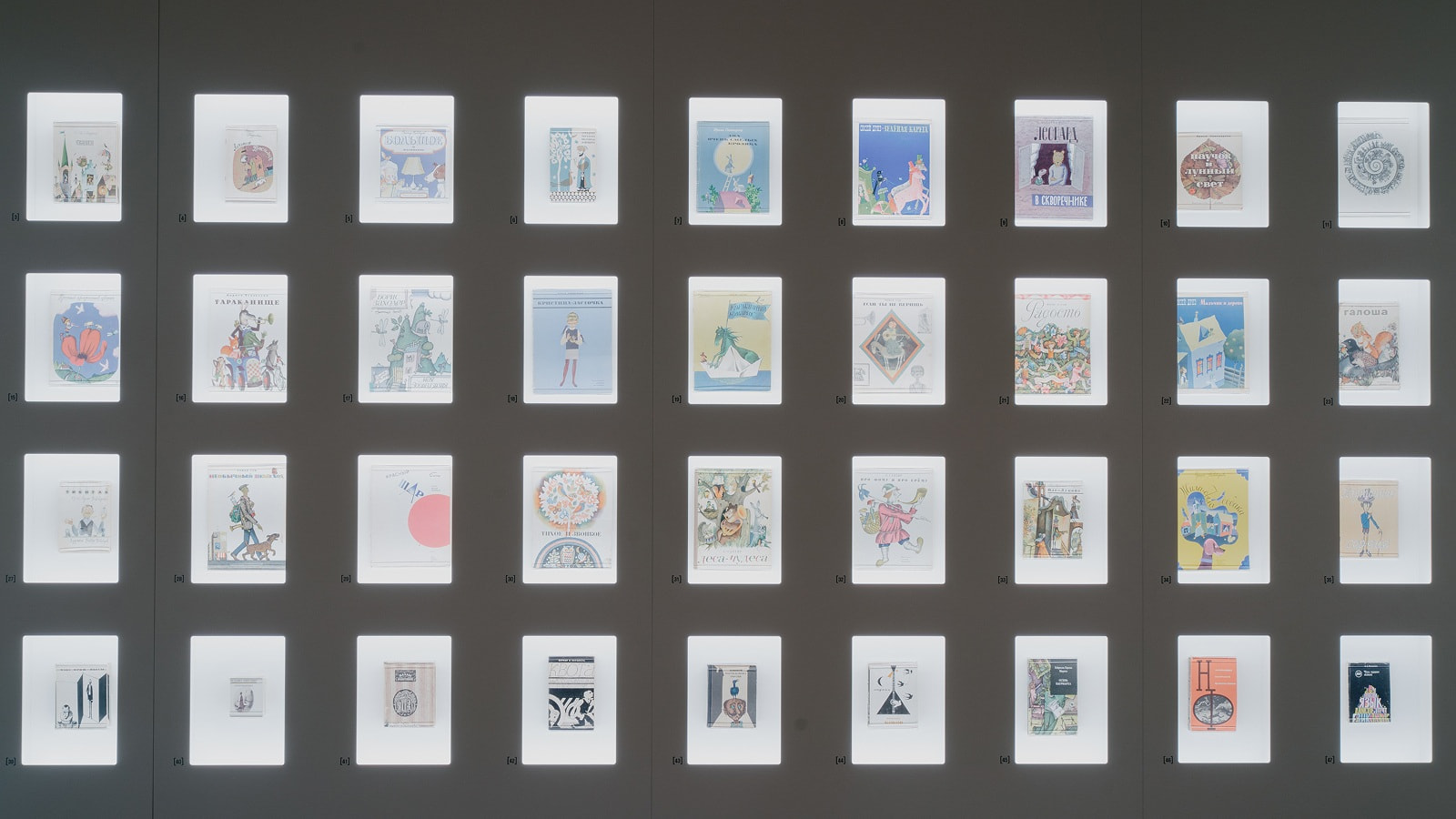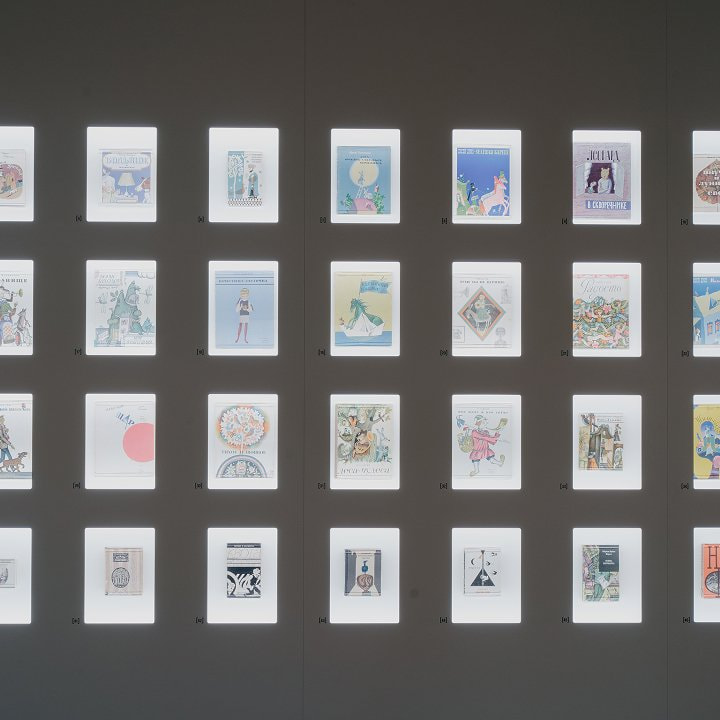Book illustration in the USSR became a source of income for many artists whose creative aspirations had little to do with the production of images in line with the ideology and aesthetic of socialist realism.
In the corridors of publishing houses and editorial offices you could bump into Ilya Kabakov, Viktor Pivovarov, Erik Bulatov, Eduard Gorokhovsky, Igor Makarevich, Irina Nakhova, Ülo Sooster, Oleg Vassiliev, and Vladimir Yankilevsky. All of them have made significant contributions to the art of the book: several generations of children and teenagers grew up reading books with their illustrations.
In 1982, artist and illustrator Viktor Pivovarov (b. 1937) made his album Kabakov and Pivovarov, one of the first works that mythologized Moscow Conceptualism—a local historical phenomenon Pivovarov witnessed and was part of. In it, Pivovarov used two very long ovals to depict himself and artist, illustrator, and leader of Moscow Conceptualism Ilya Kabakov (1933–2023). On the first sheet, the «ovals» meet at a publishing house and start a conversation about international affairs. Then they decide to take a walk and embark on a Chagall-inspired flight over the city, forests, and mountains. Their conversation moves on to the philosophical aspects of being: Pivovarov’s oval insists on the sacrality of everyday life and simple things, such as a rock, a worm, a light bulb or a matchbox, while Kabakov’s protagonist keeps grumbling about the fate of Russia, the phenomenology of fear, his own futility and his creative calling.
This «encounter» in a corridor of the publishing house Detskaya Literatura, where the two artists did indeed work, became a starting point for two «solo» displays in Garage open storage (Viktor Pivovarov) and Garage Library (Ilya Kabakov). Bringing together rare original sketches for books and magazines they worked on from the 1950s to the 1990s and conceptualist works of the same years, the project shows how children’s book illustration became a platform for quiet revelations and the birthplace of new ideas that determined the development of nonconformist art. The corridor of a publishing house is an actual and a symbolic meeting place for the two artists: between pages and walls, between commissions and personal gestures, between art for the public and art «for the desk drawer.»


